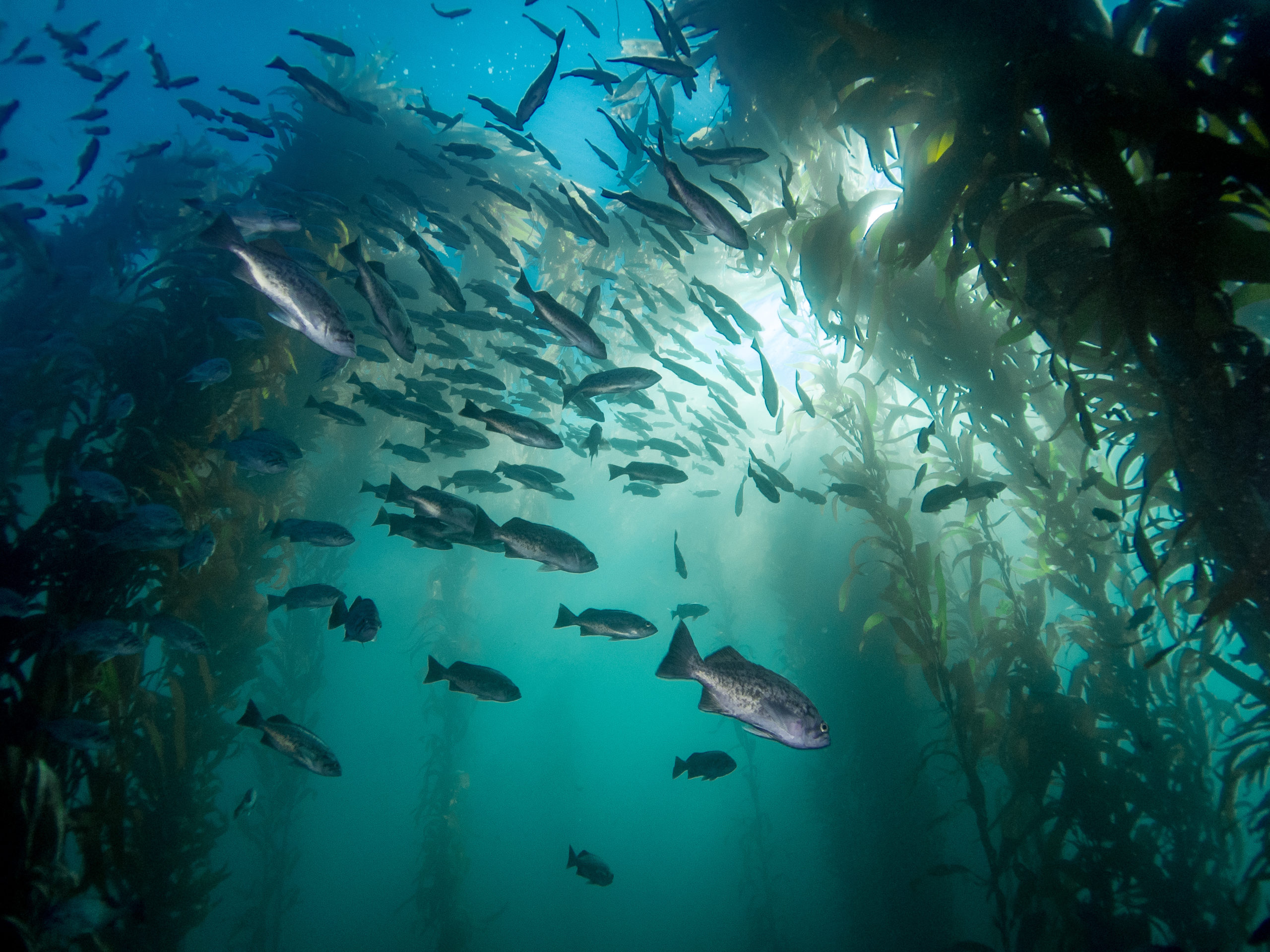
Kelp Forest Loss: What Does it Mean and Why Does it Matter?
Kelp forests are commonly seen along the west coast of the United States and support more diverse populations of plants and animals than almost any other single ocean community. Individual kelp plants take root in dense groupings, each growing as much as 18 inches every day in favorable conditions. Unlike colorful, slow-growing coral reefs, kelp grow rapidly and create dense, brown-green forests that tower above the ocean floor. They are found in Channel Islands, Monterey Bay, Cordell Bank, and Greater Farallones national marine sanctuaries and offer incredible diving experiences as well as wildlife viewing opportunities like bird and whale watching.
Kelp forests are not just beautiful, they provide shelter and food for thousands of species, from invertebrates to large marine mammals and everything in between. They also benefit us by trapping and storing carbon dioxide—a gas byproduct of mechanical processes like driving and industry that drives of climate change—during photosynthesis where plants break down the carbon dioxide molecules to produce their own food and release oxygen.
Like trees on land, kelp forests experience seasonal changes in density, activity, and productivity. Things like grazing by sea urchins, large weather events, El Niño, and sedimentation are natural events that can remove individual or groups of kelp from the forest, leaving space for new growth later in the year. Luckily, kelp’s quick growth can help forests recover quickly from physical disruptions. Unfortunately, human activity can add to the reduction of kelp forests, threatening the delicate ecosystems and diverse species they support—activities like commercial kelp extraction, pollution, and even overfishing of certain species that protect kelp from predators like urchins and halfmoon fish. If we fail to protect kelp forests from overuse, we stand to lose some of the most beautiful, diverse, and ecological important marine communities on earth.
So, what can we do to protect and preserve kelp forests? First, we can support the protection of marine mammal species like sea otters that keep sea urchin populations in balance. Without sea otters, sea urchin populations can graze on kelp forests at a rate of 30 feet per month, which is a lot if you add on other factors of kelp forest loss! We can also reduce our energy consumption to offset the warming and acidification of ocean waters, which threaten kelp forest health due to the limited environmental conditions in which these algae can thrive. By reducing use of chemicals and fertilizers on our lawns and gardens that then get carried to waterways and the ocean by runoff and discouraging industrial disposal of sewage and other pollutants in the ocean, we can offset the degradation of kelp forests.
Luckily, NOAA’s Office of National Marine Sanctuaries and other offices regularly monitor kelp forests to understand their condition and what can be done to minimize kelp forest loss and restore them where possible.
